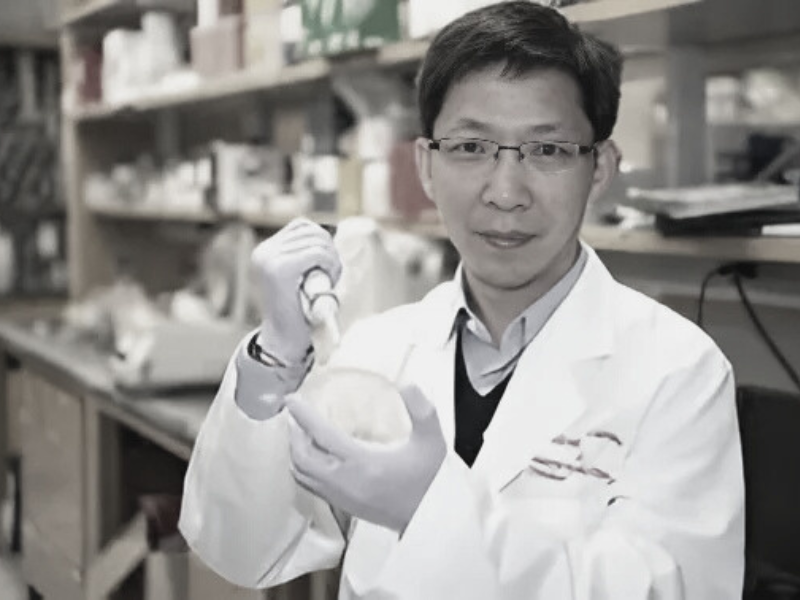Researchers working on Duchenne Muscular Dystrophy (DMD) are truly “muscling” through the challenges, inching closer to a breakthrough that could change lives forever. For decades, these dedicated scientists have been pushing the limits of what’s possible in medical science.
From the first discovery in the 19th century to cutting-edge genetic therapy, research warriors have been tirelessly “working their muscles” to decode the mysteries of DMD.
Their journey has truly been a rollercoaster ride. While finding the DMD cure may feel like a never-ending uphill “climb”, the progress they’re making is nothing short of a powerful innovation, offering hope that a cure might be just a step away.
Table of Contents
Roots of Duchenne Muscular Dystrophy (DMD):
Duchenne muscular dystrophy (DMD) is a rare genetic disorder that causes progressive muscle weakness, primarily in young boys. It happens because of a mutation in the dystrophin gene, which is crucial for keeping muscles strong and intact. But do you know where this condition was first described? And why it’s called “Duchenne”? Let’s break it down.
The first description of this disorder dates back to 1834, by a Neapolitan physician named Giovanni Semmola. In 1836, another doctor, Gaetano Conte, added more observations about the condition. However, the disorder is named after Guillaume-Benjamin-Amand Duchenne, a French neurologist.
Why?
Because Duchenne took a deep dive into dystrophy like no one else
Duchenne was not looking for any recognition or fame but was deeply fascinated by the mysteries of the human body, particularly the muscles. Duchenne noticed something unusual in young boys—a gradual weakening of their muscles, starting in their legs and eventually affecting their whole body. These boys were otherwise bright and full of life but would lose the ability to walk by their early teens and often didn’t live past their twenties.
Duchenne started documenting everything meticulously.
Here’s the most fascinating part: Duchenne was the first to perform a muscle biopsy. He obtained tissue from a living patient to study it under a microscope. This was groundbreaking and laid the foundation for understanding Duchenne disorder.
So, while others noticed and described the condition, Duchenne’s scientific and detailed work along with his use of innovative methods earned him the name behind the disorder.
Using such techniques for a rare disease was groundbreaking for his time—like stimulating muscles with electricity. Duchenne was able to identify patterns in this muscle-wasting disorder. His careful observations and detailed case studies led him to classify this condition as a rare disorder.
That is why the most severe form of dystrophy in muscles was later named Duchenne Muscular Dystrophy (DMD) in his honour. However, in Duchenne’s time, science hadn’t yet discovered genes, so the cause of the disorder remained a mystery.
The Discovery of the Cause
Let’s fast-forward to 1986 and look at the discovery of Duchenne muscular dystrophy. A geneticist named Lou Kunkel made a groundbreaking discovery—the gene responsible for Duchenne muscular dystrophy ( DMD). He identified the dystrophin gene, which, when faulty or missing, caused the muscles to deteriorate. This was a monumental step because it told scientists exactly what they were against.
Imagine DMD as the foundation of a Jenga tower—remove even one piece and the entire structure of the muscles begins to fall apart.
Now that the cause was identified, medical researchers began asking, “How can we fix this?”
The Promise of Gene Therapy
Gene therapy has opened new avenues in treating Duchenne muscular dystrophy (DMD), a severe muscle-wasting condition. Dr. Jerry Mendell, a pioneer in this field at Nationwide Children’s Hospital, has been instrumental in advancing the treatment. His work over the past five decades has significantly contributed to the development of gene therapy for neuromuscular disorders.
One notable therapy is SRP-9001, also known as Elevidys. Elevidys is a true blessing for children, offering hope and healing by using a harmless virus to deliver a shortened version of the dystrophin gene directly into their muscle cells. The goal is to produce a functional dystrophin protein, a protein mutated in DMD patients. Early clinical trials have shown promising results, with children experiencing improvements in strength and mobility.
ImpactGuru has supported treatment efforts. Individuals requiring to fundraise for their loved one’s DMD treatment can reach out to the team of ImpactGuru for assistance.
In June 2024, the U.S. Food and Drug Administration (FDA) expanded its approval of Elevidys to include all Duchenne Muscular Dystrophy ( DMD) patients aged four and older. This decision was based on clinical data indicating that the therapy can slow the progression of muscle dystrophy, offering hope to many.
While challenges remain, the progress in gene therapy for Duchenne Muscular Dystrophy ( DMD) represents a significant step toward introducing more effective treatment for genetic disorders. Ongoing research continues to build on these advancements, aiming to improve patient outcomes and quality of life.
A Global Effort
The management and cost of DMD treatment became a worldwide mission, involving countless scientists, doctors, families, and advocacy groups. Companies like Sarepta Therapeutics, Nippon Shinyaku, and PTC Therapeutics worked tirelessly to develop new drugs, each targeting different aspects of the ailment. Researchers explored everything:
- from steroids to manage symptoms,
- to genetic editing with cutting-edge CRISPR (clustered regularly interspaced short palindromic repeats) technology, which could one day correct the faulty dystrophin gene altogether.
Duchennes Of 21st Century
Thousands of scientists and medical professionals worldwide are dedicated to researching Duchenne Muscular Dystrophy ( DMD).
Dr. Mendell‘s contributions to gene therapy have been widely recognized. In May 2024, he was named among the list of 100 individuals who impacted global health for TIME’s inaugural TIME100 Health list, highlighting his influence in the advancement of gene therapy with Elevidys.
(Photo Source: Nationwide Children’s Hospital)


Dr Renzhi Han, a professor of paediatrics at Indiana University School of Medicine, has been exploring innovative gene therapy approaches to address the limitations of current treatments. His work focuses on delivering more functional versions of the dystrophin gene to better protect muscle integrity.
(Photo Source: Ohio State University)
Professor Aijun Wang at UC Davis is leading a team to develop in-utero gene editing therapy aimed at correcting the genetic defects causing Duchenne Muscular Dystrophy ( DMD) before birth. This pioneering research could potentially halt the disorder’s progression from the very beginning.
(Photo Source: National Center for Interventional Biophotonic Technologies)

In our digital age, technology has also played a huge role in contributing to accelerated progress in the treatment of Duchenne Muscular Dystrophy (DMD).
Advances in technology have revolutionized the landscape of Duchenne Muscular Dystrophy (DMD) research, bringing hope for breakthroughs once thought unattainable.
CRISPR-Cas9, a cutting-edge gene-editing tool, enables researchers to correct the genetic mutations responsible for DMD, potentially restoring dystrophin production in muscle cells. Viral vector therapy, like the ones used in exon-skipping and micro-dystrophin gene therapy, has harnessed harmless viruses to deliver life-saving genetic instructions directly to affected tissues.
And AI no longer stands behind in this picture either. Artificial intelligence (AI) increases drug discovery by analyzing vast datasets, identifying potential therapeutic targets, and optimizing clinical trial designs. Together, these technologies have significantly shortened the path from lab discoveries to real-world treatment, giving families affected by Duchenne Muscular Dystrophy ( DMD) hope for a brighter future.
Finding a cure for Duchenne Muscular Dystrophy (DMD) has been no easy journey. It’s a road filled with trials, errors, and countless hours of hard work by researchers and families who are holding onto hope for a lifeline. From the very first identification of the condition in the 18th century to the groundbreaking treatments we’re seeing today, the journey to find a cure has been a long, winding, and often frustrating one. But, as they say, the road less travelled is sometimes the one that leads to the biggest discoveries.
It all started back in the 19th century when the ailment was first identified by French neurologist Guillaume-Benjamin-Amand Duchenne. But, despite the early diagnosis, understanding the illness was like piecing together a puzzle with missing pieces. With 1 in 5000 births worldwide recording the symptoms, the sample size was a challenge.
It was one of the reasons it took decades for researchers to begin to uncover the genetic cause of DMD. Duchenne and the medical scientists after him have found clues in the treasure hunt to find the right treatment for DMD. But we have reached just the tip of the iceberg. There is so much more to learn about the enigmatic illness and its elusive treatment.
{World Duchenne Awareness Day (WDAD), observed annually on September 7th, aims to increase global awareness about Duchenne Muscular Dystrophy (DMD) and educate people about the condition.}
So, what’s next? Well, it’s hard to say. The future is still uncertain. Can DMD be cured still remains a question and the road to a cure may take more twists and turns than we can anticipate. But one thing’s for sure: we’ve come too far to give up now. The fight for a cure continues, and the hope for a brighter future remains alive. Families, researchers, and advocates stand united in this battle, refusing to let go of the dream of a cure. Platforms like ImpactGuru are contributing a lot to the cause, and we are hoping to add as much as we can to this effort.
Research Source:
Guillaume Duchenne de Boulogne
Duchenne Muscular Dystrophy (DMD)
Duchenne Muscular Dystrophy












